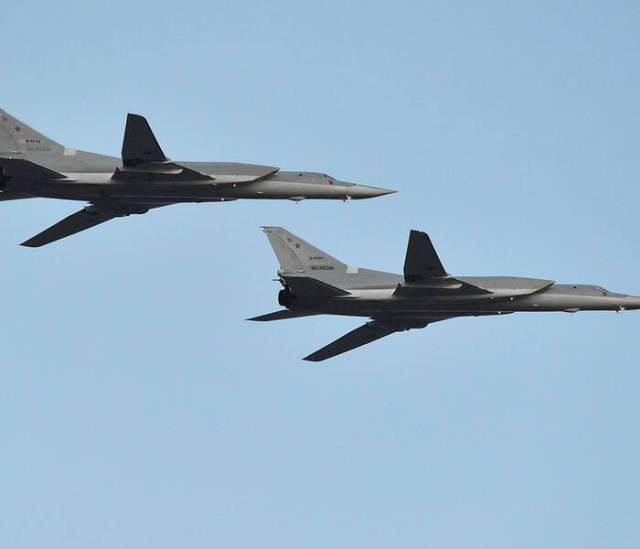A faulty catapult caused a tragedy at a military airfield
Near Kaluga there was an accident Tu-22M3
During the preparation for take-off, the long-range bomber Tu-22M3, located at the Shaikovka military airfield in the Kaluga region, accidentally triggered the ejection system. There were no weapons on board the Tu-22M. The ejection device went off on the ground when the engine was started. Initially, it was reported that the plane crashed, but immediately after the emergency, the official version of the accident was called:
"On March 23, during the planned preparation on the ground for the flight of the Tu-22M3 at the airfield in the Kaluga region, an emergency operation of the ejection system occurred," the Ministry of Defense reported.
Three crew members were killed, one seriously injured
Three of the four crew members of the plane were killed due to an abnormal operation of the catapult. The Defense Ministry said that the plane's ejection system worked before departure, as a result of which the people on board received fatal injuries: "Due to the insufficient height for opening parachutes, three crew members received injuries incompatible with life when landing." Among them is the commander of the regiment Vadim Beloslyudtsev, who was in the place of the instructor. There are no casualties among the local population.
According to a TASS source in the medical circles of the region, one of the crew members survived: "One person was taken to the infirmary of the medical unit in Shaikovka." As reported to " Lenta.<url> " in the department, a commission of the Russian Aerospace Forces was sent to the airfield to conduct a technical inspection of the aircraft and establish the causes of the accident.
The last crash with the Tu-22M3 occurred in 2019
In 2019, a Tu-22M3 of the 40th Mixed Long-Range Aviation Regiment of the Russian Aerospace Forces crashed on landing at the Olenegorsk airfield in the Murmansk Region. The bomber was destroyed as a result of a hard landing, after which it caught fire. Two crew members died immediately, and a third died later in the hospital. Then the department clarified that the reason could be the hit of the plane in the snow charge after performing a planned training flight.
The Tu-22M3 first flew in 1977
The first flight of the long-range supersonic missile-bomber with a variable sweep wing Tu-22M0 made in August 1969. The modification of the Tu-22M3 first flew in June 1977. The first Tu-22M3 was adopted by the Soviet Air Force in 1989. In total, 497 Tu-22M vehicles of various modifications were produced, including 268 Tu-22M3 units.
Currently, the Russian Aerospace Forces (VKS) have about 60 such aircraft. The main innovation in the Tu-22M3 in comparison with the Tu-22M2 was the use of turbojet twin-circuit engines with an afterburner NK-25 instead of NK-23, as well as a deep update of on-board equipment and weapons.
Currently, Russia is updating its fleet of bombers to the Tu-22M3M modification, which differs, in particular, in the NK-32-02 engines (from the Tu-160M2), modern on-board equipment based on Russian elements, and the use of an artificial intelligence system (AI).
The bomber is used to fight carrier strike groups
The main task of the Tu-22M3M is called the fight against aircraft carrier strike groups. The aircraft will receive, in particular, a complex of weapons, including modern means of communication and navigation, as well as electronic warfare (EW) and high-precision anti-ship cruise missiles X-32 class "air-surface". In the future, the Tu-22M3M is planned to be equipped with hypersonic missiles of the Kinzhal aviation complex, the range of which is estimated at three thousand kilometers as part of a missile carrier-bomber.



